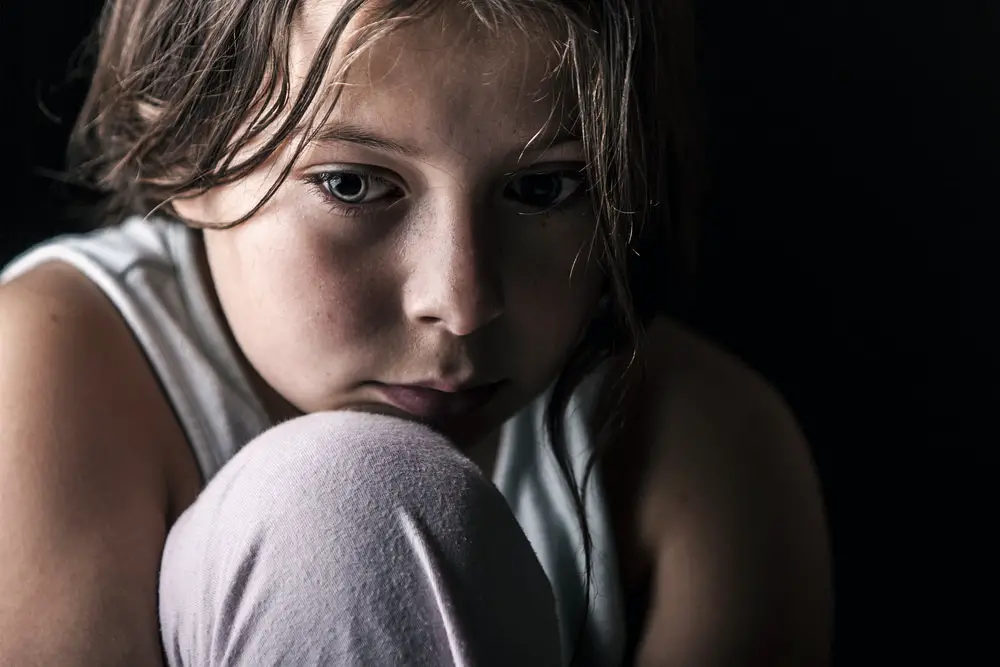Depression is a serious and often debilitating disorder that is of epidemic proportions in our stressed society today. Research shows that many people suffering from depression started having issues during their childhood.
Depression and anxiety are among the most common mental health disorders in children. About 7% of children ages 3 to 17 have anxiety and about 3% deal with depression. An estimated 3.2 million adolescents aged 12 to 17 have at least one major depressive episode.This number represents 13.3% of the 12 to 17 population. An estimated 31.9% of adolescents have had an anxiety disorder. (1)
Although children naturally have mood swings as they grow and develop, depression is different. Kids, unlike adults, are more likely to experience primary symptoms such as irritability and physical complaints.
Other Signs of Depression in Children
- Behavioral problems at school
- Withdrawing from friends and family
- Changes in eating or sleeping habits
- Feelings of sadness or hopelessness
- Feelings of guilt or worthlessness
- Lack of interest in fun activities
- Low energy levels or general tiredness
- Mood changes, such as irritability
- Impulsivity and aggression (2,3)
Children with untreated depression are more likely to experience recurrent episodes or to develop an additional mental illness including higher levels of adult anxiety and other issues. Consequences of depression range from mild to severe and may appear years after a depressive episode, especially when left untreated.
Behaviors in Untreated Depression
- Risk-taking and reckless behavior
- Substance abuse
- Academic decline and failure
- Suicidal thoughts and behaviors
- Increased criminal behavior (4)
A recent study addressing depression in youth between the ages of 10 and 24 was published in the Journal of the American Academy of Child and Adolescent Psychiatry.
The findings were based on the Great Smoky Mountains Study tracking the mental health of 1420 children between the ages of 9 and 30 from the rural southeast. This study has been ongoing since 1993. The primary areas of focus were their health, wealth, crime, and social outcomes through their years of development.
Lead author William Copeland, Ph.D. said: “One in twelve children struggle with depression at some point between the ages 9 and 16, with girls more likely to be affected than boys. This is a common childhood challenge, that, unfortunately, often goes unnoticed by the adults in children’s lives, including parents, teachers, and pediatricians.” (5)
How to Help Your Child
- Monitor their moods
- Provide reassurance
- Encourage your child to talk
- Teach your child to ask for help
- Never minimize their feelings
- Monitor your own behavior (3)
There are no tests to diagnose depression although a mental health evaluation of your child can be most helpful. Every child is different. Some may outgrow depression or anxiety while others may need to manage these conditions for the rest of their lives. You can help your child now by making sure they get a proper diagnosis and the right treatment. Talk with your pediatrician or another healthcare provider. Also, check out this resource center.
SOURCES
- https://www.cdc.gov/childrensmentalhealth/features/anxiety-depression-children.html
- https://my.clevelandclinic.org/health/diseases/14938-depression-in-children
- https://www.verywellmind.com/how-depression-symptoms-may-appear-in-your-child-1066788
- https://www.verywellmind.com/possible-effects-of-depression-in-children-1066622
- William E. Copeland, et al. Associations of Childhood and Adolescent Depression with Adult Psychiatric and Functional Outcomes. Journal of the American Academy of Child & Adolescent Psychiatry, 2021; 60 (5): 604 DOI: 10.1016/j.jaac.2020.07.895.



















